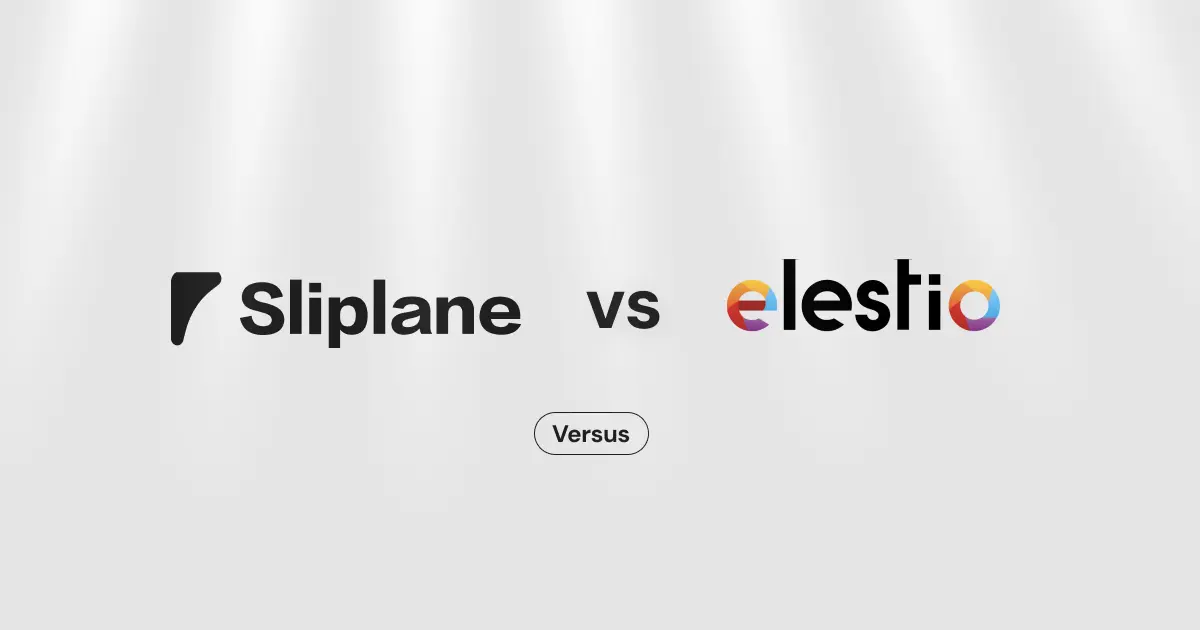
Sliplane vs. Elestio
 Jonas Scholz
Jonas ScholzSliplane takes a radically different approach to container hosting. While Elestio focuses exclusively on managed open-source applications, we give you a general-purpose server where you can run anything - your custom apps, databases, or open-source tools - for one fixed monthly price.
How It Works
Here's the simple concept: You rent a server (starting at 2 vCPUs / 2GB RAM for €9/month), and you can run any Docker container your server can handle.
Want to host:
- Your custom Node.js application
- A React frontend you built
- PostgreSQL with your specific configuration
- That Python script you wrote last week
- Open-source tools when you need them
- Development environments and staging servers
All on one €9/month server? Go for it. Your cost stays the same whether you run 1 container or 20.
The Flexibility Gap: General-Purpose vs. Open-Source Only
This is the fundamental difference between Sliplane and Elestio:
Elestio's approach:
- 350+ pre-configured open-source applications
- Fully managed with automatic updates
- Great if you only need their catalog
- Can't run custom applications
- Each service needs its own instance ($$$)
- Starting at $10/month per service
Sliplane's approach:
- Run literally any Docker container
- Your custom apps alongside open-source tools
- Full control over configurations
- Mix development and production workloads
- All containers share server resources
- €9/month for everything on one server
Real Cost Breakdown
Let's look at the actual pricing:
Elestio pricing:
- Minimum $10/month per managed service
- Each app runs on its own dedicated instance
- Hourly billing based on resource usage
- Need 5 services? That's $50+/month minimum
- Limited to their pre-configured catalog
Sliplane pricing:
- Base server: €9/month (2 vCPU, 2GB RAM)
- Run unlimited containers
- Your apps + open-source tools together
- Need 5 services? Still €9/month if they fit
- Deploy anything that runs in Docker
The Management Trade-off
Elestio excels at fully managed open-source deployments:
- Automatic updates and security patches
- Pre-configured with best practices
- Monitoring and alerts included
- Backups handled automatically
But this comes with limitations:
- No custom applications allowed
- Can't modify configurations beyond presets
- Each service isolated = higher costs
- Vendor lock-in to their management layer
Sliplane gives you freedom with responsibility:
- Deploy anything you want
- Full control over configurations
- Updates are your responsibility
- Perfect for developers who know their stack
Real-World Example: Small Business Setup
Let's compare costs for a typical small business:
Requirements:
- Company website (custom Next.js app)
- Internal tool (custom Python app)
- PostgreSQL database
- n8n for automation
- Uptime monitoring
On Elestio:
- Can't host custom Next.js app ❌
- Can't host custom Python app ❌
- PostgreSQL: ~$15/month
- n8n: ~$10/month
- Uptime Kuma: ~$10/month
- Total: $35/month + need another host for custom apps
On Sliplane:
- Everything on one server ✓
- Medium server: €24/month
- All custom apps included
- Total: €24/month (~$26)
When Elestio Makes Sense
To be fair, Elestio is excellent for:
- Non-technical teams who need managed open-source tools
- Enterprises requiring fully managed services with SLAs
- Users who only need standard open-source applications
- Projects where automatic updates are critical
But if you're a developer with custom applications, need flexibility, or want to minimize costs, Elestio's model doesn't fit.
The Bottom Line
Elestio is great if you only need their catalog of 350+ managed open-source tools and don't mind paying $10+/month for each one. But most developers need more flexibility.
Sliplane gives you the freedom to run your custom applications alongside any open-source tools you need, all for less than the cost of a single Elestio service. Why limit yourself to a catalog when you can have complete freedom?
Got custom apps to deploy? Let's talk - I'd love to show you how much you can save.
Cheers,
Jonas, Co-Founder of sliplane.io